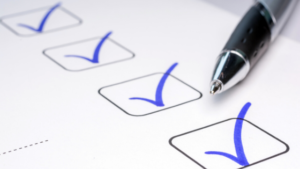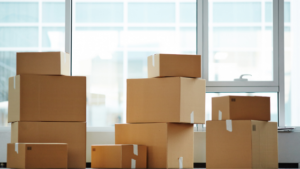Checklist For Disconnecting And Reconnecting Computers For Moving
Moving computer equipment from one location to another is highly vulnerable to damage and other moving hazards. Loss of information, missing parts, and loss of time in shipping and setting up can be crucial, especially to business continuity.
Whether you are moving home or setting up a new office, it’s essential to have a plan to protect sensitive data. Disconnecting and reconnecting quickly and efficiently will ensure you can be up and running with less stress and downtime. Here’s a checklist to help you disconnect and reconnect your computer:
- Make a Master List
Make a list of your computers, equipment and accessories, and where they will sit in the new location. The list should include:
- Monitors
- Towers

- Adapters
- Keypads
- Mouse
- Cables
- Routers
- Speakers
- Webcams
- Headphones
- Power cords
- Surge protectors
- Other special accessories
- Label Your Equipment
After your master list, start labeling each item. If you’re in an office setting, with multiple units, it’s important to label each piece of equipment. It ensures that each user gets the same setup and other configurations at their new location.
- Backup Your Systems
Backing up your data is another critical area to consider in helping to protect your information in the event of loss, damage, or delays. Some experts also suggest making more than one back up provision to ensure security.
- Packing
Packing computers requires careful handling and the best packing methods possible to ensure your items arrive intact.
Some materials include:
- Bubble wrap
- Soft wrapping paper
- Storage Boxes
- Blankets
- Sheets
- Towels
- Plastic Bags
- Rubber bands
- Twist ties
- Markers
- Packaging tape
- Scissors
Here’s How to Pack Each Item Successfully:
Desktops
 After backing up and labeling your essential data, start to pack your equipment. For desktops
After backing up and labeling your essential data, start to pack your equipment. For desktops
- Switch the monitor off
- Take out the cables from the tower
- Measure the monitor and tower to get the right size box to store them
- Observe how the connections work to help you reconnect in the correct order. You can make a separate how-to list or take some pictures.
- Place some soft material or bubble wrap at the base of the box
- Wrap the computer tower in a few sheets of wrapping paper
- Seal the edges with packing tape
- Follow up with a few layers of bubble wrap for extra padding
- Seal the sides of the bubble wrap with packing tape
- Place the tower upright into the packing box
If there are any spaces between the tower and the box, fill them in with pieces of cloth, paper, or bubble wrap to keep the tower steady when shipping.
- Test the box with a light shake to ensure there’s no shifting. Add extra padding if necessary.
- Close the lid and seal with tape and label it appropriately.
- Packing the components and accessories
- Organize the cables, mouse, adapters, power cords, headphones, webcams, and other accessories in appropriate groups. It will help save time when reconnecting.
- Fold each part loosely to avoid any damage.
- Wrap the parts with rubber bands or twist ties to hold them in place.
- Use some sheets of bubble wrap to cover the parts.
- Place in plastic bags and then in the storage boxes.
Packing Computer Monitors
Your computer monitor is one of the most critical parts of your computer system. Therefore, it’s necessary to ensure you pack it properly to protect the screen from cracks, scratches, or other damage. Here are some tips:
- Remove the stand base from the monitor
- Wrap it in sheets of paper, and finish with bubble wrap

- Cover the screen with lots of bubble wrap
- Tape it all around, but be careful not to touch the screen with the tape.
- Place another layer of bubble wrap around the screen for extra padding
- Put the monitor in the moving box and set it upright.
- The screen should sit facing an inner wall of the monitor packaging box.
Next, fill in any extra spaces with paper, cloths, or bubble wrap to avoid friction between the monitor and screen. Give the box a light shake to ensure it is stable. Close the box, tape, and label it.
Packing Laptops and Their Accessories
Here’s how to package your laptops, adapters, and chargers. A laptop bag is an ideal place to store and transport your equipment to your new location.
- Switch the laptop off.
- Close it down and detach the adapter, cables and other, components.
- Gently fold the adapter and secure it with some rubber bands.
- Place it in a plastic bag.
- Put the package in the socket within the laptop bag.
If there’s No Laptop Bag:
Label each part and place similar items together with accompanying devices for easy retrieval when reconnecting.
Cover the computer with packing paper, and then bubble wrap. Alternatively, you may also use a blanket, sheet, or some towels to cushion the parts.
Place the laptop inside your luggage, carry-on bag, or packing box.
Reconnecting Your Computers
Now that you are in your new location, here are some suggestions for reconnecting your computers:
Laptops
- Some experts suggest allowing at least one day before reconnecting your computer. It ensures your system can adjust to any changes in temperature at your new location.
- Unpack the cables, adapters, and other accessories and connect to your laptop according to your manual.
- Plug into the outlet.
- Switch on the laptop and let it boot up.
- Make any diagnostic tests to ensure the system is up and running correctly.
Reconnecting Desktops
Take the desktop out of the packing box.
Take off the packing material
Set the tower, monitor, keypad, mouse, and accessories in the setup area
Attach the cable to the monitor port to the back of the tower case
Plug the cable into the monitor
Attach any screws to the tower where necessary

Keyboard
Attach the keyboard by plugging in the connector cable into the socket at the back of the tower
Mouse
Attach the mouse connector to the correct portal at the rear of the computer. If the mouse is wireless, connect the Bluetooth adapter to the system as necessary.
Accessories
Attach headphones, speakers, and other accessories using the audio portal on your computer. Look for the appropriate color when attaching each item in their port.
Connect the Power
Attach the power cords to the back of the computer, and then into the surge protector. Next, connect the monitor to the surge protector. Plug the surge protector cord into the wall socket and switch on the surge protector.
If you’re not using a surge protector, plug the computer cord directly into the outlet. Turn on the computer and troubleshoot to ensure it is running correctly.
Conclusion
Moving your computer and equipment is a delicate act. It requires using the right packaging materials and techniques to ensure you protect your sensitive information and equipment from potential damage.
Making a checklist is an excellent way to keep track of your equipment, and to help you reconnect in a seamless and stress-free way. The list will help you locate the items and accompanying accessories and save on setup time. If you are planning an upcoming office move be sure to click here for a free estimate
